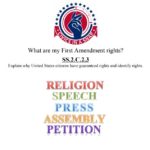How do alliances shape international relations? In February 2022, the Russian Federation, led by its authoritarian president Vladimir Putin, launched a significant invasion of neighboring Ukraine. Putin justified this in part by claiming that Ukraine’s desire to join the North Atlantic Treaty Organization, or NATO, threatened Russian security. So what is NATO, and why would Russia see it as a potential threat?
Contrasting U.S. Founding Principles & Totalitarianism
Why are the founding principles essential for a free society? This civics and government lesson plan was developed to facilitate instruction and discussion concerning the United States’ founding principles versus totalitarian systems of government. Students will contrast a totalitarian system of government with the founding principles of the United States as established in the Declaration of Independence, the US Constitution, and the Bill of Rights.
Civics in Real Life: Sedition
Protest has a long history in the United States, especially in the U.S. Capital. Citizens have taken to the streets to express their disagreements with the actions or policies of the government. Whether it is advocating for civil rights, expressing opposition to abortion rights, or demonstrating support or opposition to a political candidate, the First Amendment to the U.S. Constitution guarantees individuals the right to free speech, as well as the rights to peaceable assembly and to petition the government. Together, these add up to peaceful protest. But there may be times where protest becomes unlawful and slips over the line into sedition.
Other relevant Civics in Real Life lessons: Inching Toward Inauguation; Presidential Transition; Electoral College; Consent of the Governed. Grades 6-12. Florida Joint Center for Citizenship.
Civics in Real Life
Civics in Real Life is a simple-to-use resource that ties in to what’s going on today. On this page, updated regularly through the school year, you will find concise resources that explore a civics concept or idea connected to current events. Simply click on the resource to download the PDF and share with your students!
Learning about the Preamble to the U.S. Constitution
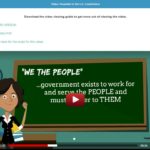
This resource provides students with an English language video and associated student friendly readings (in English, Spanish, and Haitian Creole), as well as reading and video guides and self assessment tools. Using these, students will explore the meaning and importance of the Preamble.
Free registration is required to use the resource.
How Do We the People Influence and Monitor the Government?
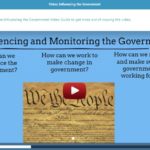
This resource provides students with an English language video and associated student friendly readings (in English, Spanish, and Haitian Creole), as well as reading and video guides and self assessment tools. Using these, students will consider the different ways that citizens, interest groups, and the media can influence and monitor government.
Free registration is required to use the resource.
Arguing Arkansas: Analyzing the Impact of Eisenhower’s Little Rock Speech
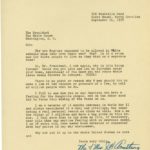
This lesson, developed in collaboration with the National Archives, has students explore a number of primary sources, all connected to the events at Little Rock High School. It asks students to consider how the events at Little Rock may or may not have been impacted by the words and leadership of President Dwight D. Eisenhower.
The Road to Independence
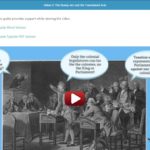
This resource provides students with an English language video and associated student friendly readings (in English, Spanish, and Haitian Creole), as well as reading and video guides and self assessment tools. Using these, students will explore the road to independence and key events along the path to the Declaration of Independence!
Free registration is required to use the resource.
What are my First Amendment Rights? A Lesson for Early Elementary
Learning About Articles I, II, and III!
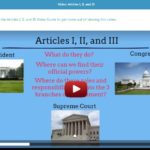
This resource provides students with an English language video and associated student friendly readings (in English, Spanish, and Haitian Creole), as well as reading and video guides and self assessment tools. Using these, students will explore the basic foundation of the Constitution contained in Articles I, II, and III.
Free registration is required to use the resource.
